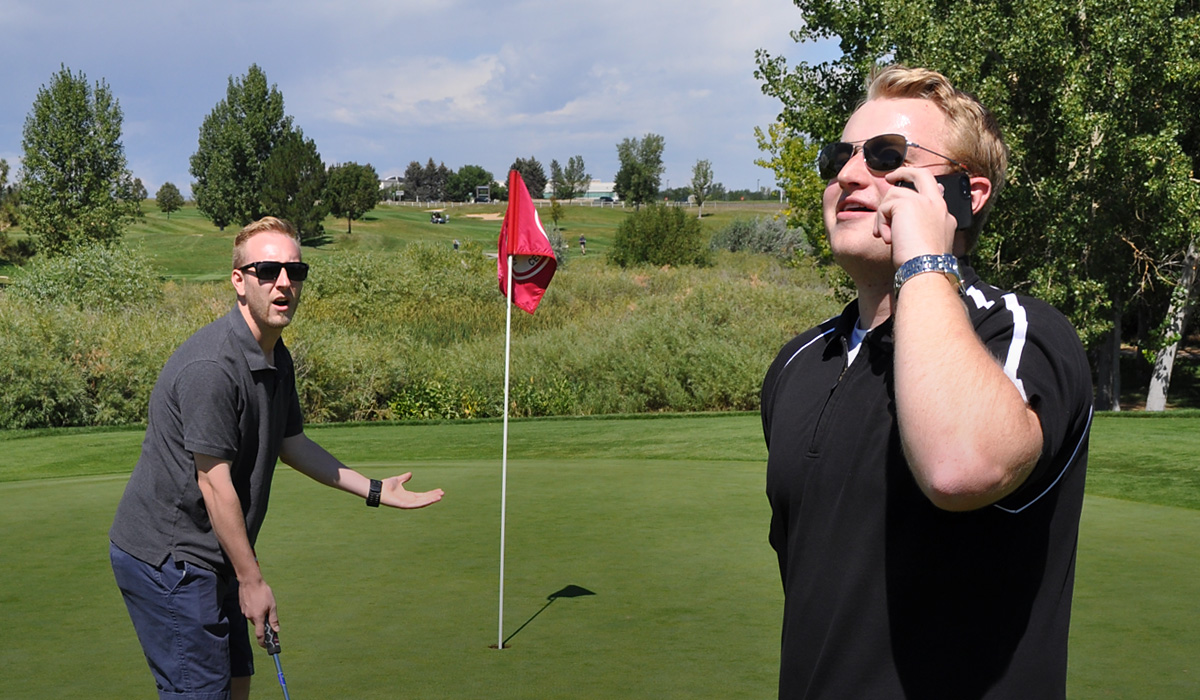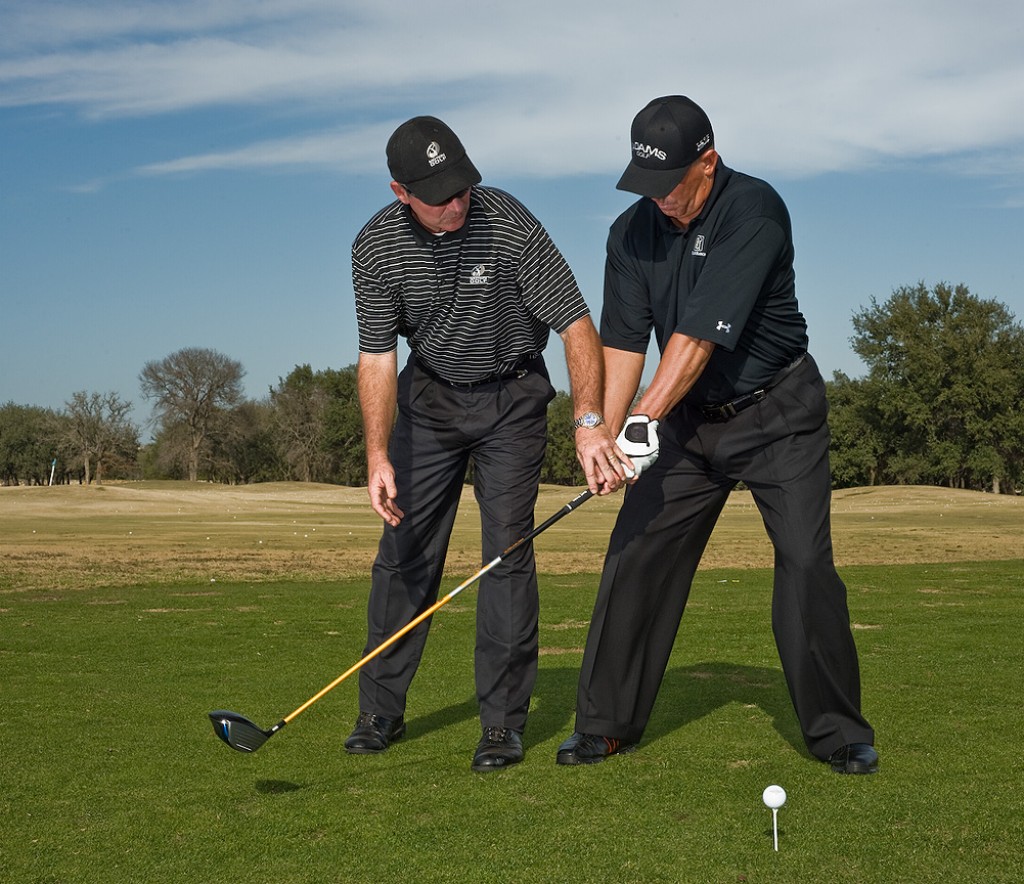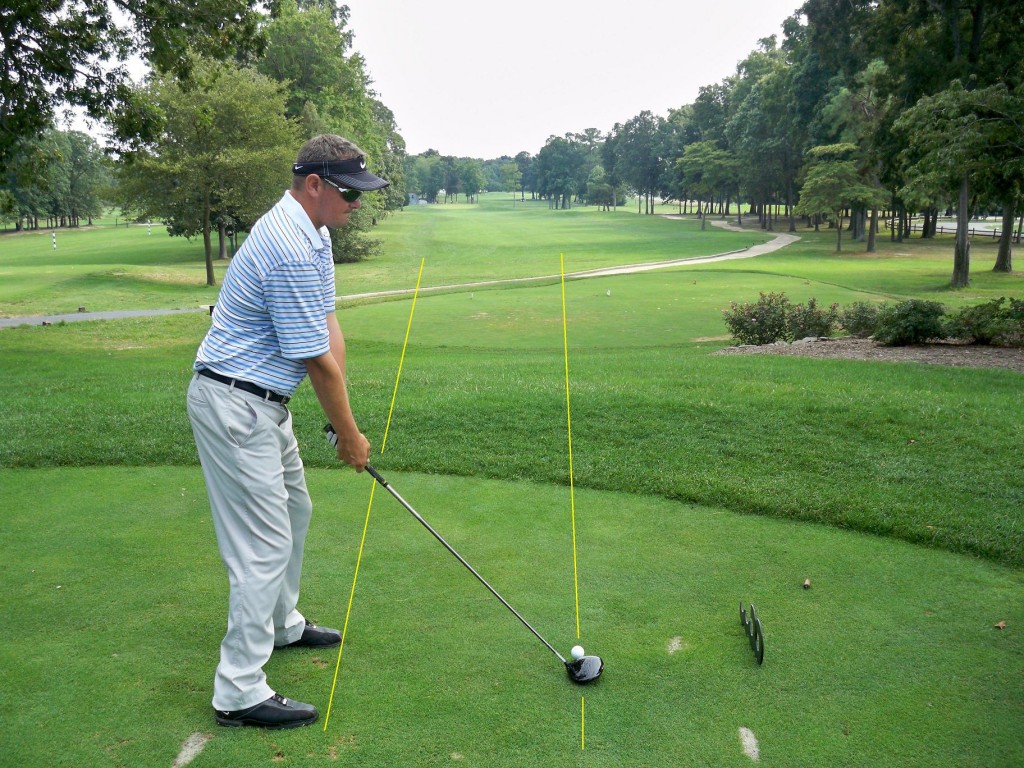Golf is a great way to spend a day outside with your friends, but it’s tough. The information in this guide is basic, but parts may play as a good reminder for intermediate golfers. Hopefully you can find something on this page or on another section of the site to make the game a bit more enjoyable for you.
Golf Basics

- Golf Jargon – There’s lots of golf specific terms to learn, this wikipedia article is a good resource for golf terms.
- Golf Rules – There are a lot of rules in golf and many are not super obvious. If you aren’t playing in a tournament or playing strangers for money most of them probably won’t matter for a while.
- Dress Codes – Most nicer courses require men to wear collared shirts but are more flexible with women’s dress codes. As a beginner, you most likely won’t be playing super fancy courses. If you are playing a cheaper municipal course, they most likely won’t be enforcing a dress code, but you should probably plan on wearing a hat, sunglasses, and sun-sunscreen since you will be out in the sun for 4+ hours.
Golf Etiquette

Golfers are a weird bunch and there are a lot of things out on the course that they consider to be faux pas on the course. Some etiquette you will see beginner golfers break more frequently are:
- Not repairing ball marks. When the ball lands on the green, it can sometimes leave an in indent which can screw up putts. If you don’t repair it properly, you can destroy the root. Watch this video to learn how to repair your pitch marks. Also fix your divots and rake sand traps.
- Slowing down the pace of play. Be ready to take your shot when it’s your turn. If your group is slower and there is a group behind you waiting for you, let them play through.
- Talking while people are setting up their shot. Or talking loud enough that people putting or teeing off on other holes can hear you. Also, no one wants to hear your conversation while you’re on your phone. Keep your phone in your golf bag. Remember, You’re out on the course to enjoy yourself.
- Giving unsolicited advice. Don’t give other players advice except if they ask. Especially as a beginner golfer. The driving range is the place to practice and tweak a swing, not out on the course. Giving unsolicited advice is a surefire way to frustrate someone while they are trying to enjoy themselves.
- Hitting into other groups. If other golfers are in your range you should wait before hitting your shot. If you misshit a ball and it is heading close to another group, you should yell “Fore!” to warn the other golfers so they can take cover. Most golfers won’t be upset if you give them proper warning. If you hit into someone and don’t warn them, they may be pissed.
- Driving the golf cart too close to the green. Courses want to keep the grass around the greens in good shape. Don’t risk damaging the grass by driving or parking your cart too close to the green or tee box.
- Moving around in someone’s putting line. Putting is hard enough as it is without other players distracting you.
Getting Golf Clubs

Starting out, the clubs you play will be less important than how you play them. You won’t be hitting consistently and you will be getting ahead of things by paying $1,000 for a new set of irons. If you can, start off by playing a friend’s set of clubs, a used set from the thrift store or off craigslist. If you end up quitting golf, you won’t be out $1,000.
Instead of buying a state of the industry set of clubs, use your money for lessons, buckets of balls at the range or rounds of golf.
Other Golf Gear You’ll Need

After you sort out a set of clubs, here are some more things you’ll need:
- Golf bag. As a beginner you should find a bag that stands on its own and has comfy backpack straps.
- Golf balls. As a beginner you should just use whatever is the least expensive. You can buy used balls on Amazon or check out this list of the best golf balls for beginners. As a beginner you will be losing a ton of balls. No need to break the bank on balls that will get lost.
- Tees. You can buy a bag of 500 that will last forever.
- Divot Repair Tool. As a beginner you will sometimes need one to fix your ball marks. It is better to have one than to make a ball mark and not have a tool to fix it. Many ball marks can be fixed with a tee.
- Ball marker. You can use a coin or the button off your glove but have something small and flat to mark where your ball is on the green.
- A towel, or Two. Have one towel to clean your club faces and balls. If you’re too fancy to use your shirt, you can also bring one for your face. You will break a sweat on the course, especially during the summer.
- Golf shoes. Your shoes will get grassy. Golf shoes help when course is wet. It doesn’t have to be rainy, even the morning dew will make the grass slippery. When you buy golf shoes, get shoes with plastic spikes. Most courses don’t allow metal spikes.
- Golf glove. Gloves wear out quickly, but they help with gripping the club and avoiding callouses. Pro tip: if you are playing in the heat or if your hands get sweaty, bring multiple gloves and rotate them as you play.
Approaching Golf the Right Way

Unless you’re a Korean Dictator, you’re not gonna be shooting a perfect game of golf (18 hole in ones), nor will you shoot anywhere near par every hole. It takes time to shave stokes off your game. Even the pros blow up rounds.
Check out this article for an idea of how unrealistic many golfers are with their expectations when it comes to golf.
Don’t be bummed out, just understand golf is not something anyone expects you to be perfect at. You can only strive to be better than you were previously
Learn to love the process of golf. Enjoy being outside drinking beers with your friends and relaxing. Every shot isn’t going to be good. The game is about making small improvements and beating your previous best. Golf is a game where ultimately you are competing against yourself.
As a beginner, golf is going to suck. It’s not fun hitting 3 balls in a row into the trees or topping your drive multiple holes in a row, but it gets better.
Swing Basics
Ready to actually see some stuff about playing golf? Here are some of the basic pieces of a golf swing. There are a ton of videos on YouTube, but these are a good place to get started.
Golf Grip
The Setup
Common Mistakes at Setup
How to Putt
How to Chip
How to Play out of a Bunker
From there, the sky’s the limit both when it comes to improving your swing and the resources available for doing so.
Take Some Lessons

It makes a big difference to have someone show you the basics in person. If you are able to take a lesson from a pro, it is highly encouraged and will save you from learning bad habits that you will need to unlearn later. Lessons typically cost between $50 and $100 per hour, but some can cost 5 to 10x that. You don’t need to use the same coach as the pros use to get started, just someone to show you the basics.
Go to your home course and see where they recommend taking lessons.
YouTube Coaches
In between lessons, you can also learn a lot from YouTube golf instructors. Here are a few channels to get you started.
Common Beginner Mistakes

-
- Lifting your head. As your tee ball coach always told you, keep your eyes on the ball. If you’re not looking at the ball, how are you going to hit it square? This is the number one beginner mistake. If you aren’t sure if you’re head is lifting up, set up your smartphone to record your swing.
- Lifting up during your swing. If you’re topping the ball one common reason is lifting up during your swing.
- Not aiming correctly. The ball should go straight down the line that the tips of your feet are pointing. To check what direction you are aiming, lay a club down touching the tips of your toes. The club should be pointing at your target.
- Swinging too fast/hard. Slow and easy gets it done. If you try to crush the ball, chances are greater that you will misshit the ball. Your ego is not your friend in golf. You will hit the ball further and more consistently when you slow your swing down and focus on hitting the ball pure than when you try to murder it. A relaxed swing is the way to go.
- Playing too difficult of a course. There is no need to make golf any more frustrating than it already is by playing courses with a ton of hazards, lots of trees and narrow fairways. Get started on a short course that is more forgiving.
- Playing from the wrong tee box. Tee it forward. There’s no shame in playing from the forward tees as a beginner.
- Losing your stuff. Lots of players lose wedges around the green. Lay your wedge on the flag or somewhere else super obvious so you don’t forget it.
Step Your Golf Game Up
- Course Management. Course management is a fancy way of saying go for the higher percentage shot than just “going for it” every time. By “going for it” you can get yourself into trouble. If you make that low percentage shot, you might be able to shave a few strokes but it is more likely that you’re going to get yourself into trouble. Playing conservatively is going to help your game as a high handicapper.
- Track Your Stats. How will you know if you’re getting better if you don’t track your game? There are lots of apps out there that will help you track your game and handicap. The more you know about the areas of your game you need improvement, the more time you can spend on improving the areas that matter. Seeing the small improvements you make will help inspire you to continue grinding it out at the range. Don’t cheat yourself by not counting lost balls or mulligans. By fudging the strokes, you won’t be be able to accurately track your improvements and what you need work with.
- Range Routine. Going to the range without a plan for practice is going to be mostly a waste of time.
- Improve Your Short Game. Between 50 and 75% of all of beginner golfers’ shots are going to be pitching, chipping, and putting. It feels good to launch a long drive, but remember the saying “Drive for show, putt for dough”. Putting and your short game will win your matches.
- Fixing Your Swing. If you’re having an issue with your swing chances are someone has posted an instructional video for the issue on YouTube. Just Google the issue you’re having and chances are someone can tell you how to fix it. If you have the cash, you may save a some trail and error by having your golf instructor help sort you out.
Other Golf Guides to Check Out
- Golf Training Aids. As a beginner, going out to the driving range and banging buckets of balls is going to be the best possible way to practice (assuming you are also spending an equal amount of time on the practice green putting). When you are ready to start investing in training aids, this is a good resource to get started.
- Range Finders. A range finder might not be the first piece of gear you need to purchase, but when you are ready to learn more about golf rangefinders and the best ones on the market for the money, this is a great resource.
- Golf Balls for Beginners. As a new golfer you will be going through a lot of balls. This is a good resource for finding a ball that suits your game and doesn’t break the bank.
Saving Money
Golf is not cheap but there are ways to save money. Here are some tips.
- Use Discount Tee-Time Sites. Golf courses allow discount tee time sites like Golfnow.com, EZLinks.com, and Golf18Network.com to sell unused tee times at a discount. You most likely won’t get prime tee times, but using a discount site can get you 10-80% off normal rates.
- Buy a Course Membership. Many courses will offer annual memberships for significant discounts. You can also buy key fobs for discounted balls at the driving range.
- Play Early Bird or Twilight Hours. Most courses offer good discounts after before or after work when the course is a dead.
- Walk with a Push-Cart. Invest $100 in a three-wheeled push cart and you can save $15 per round on cart fees. Pushing a cart is good exercise and many golfers claim that walking improves their game by keeping them looser between shots.
- Buy Discounted/Used Gear. You don’t need the latest year’s model of club. By buying older or preused golf gear you can save big.
- Get a Ball Retriever. You are going to be losing a lot of golf balls as a beginner. If your lose your ball in in a water hazard, you may be able to snag it with a retriever.
Recommended Reading and Watching
Ben Hogan’s Five Fundamentals of Modern Golf
